Two point sources are placed on a straight line separated by a distance d=3λ. Both the sources are placed at a distance L from a wall which is perpendicular to the straight line. Both the sources are sending waves of equal intensity.
Find:
a. Locus of the points on the wall having equal intensity.
b. Maximum and minimum path difference observed on the wall.
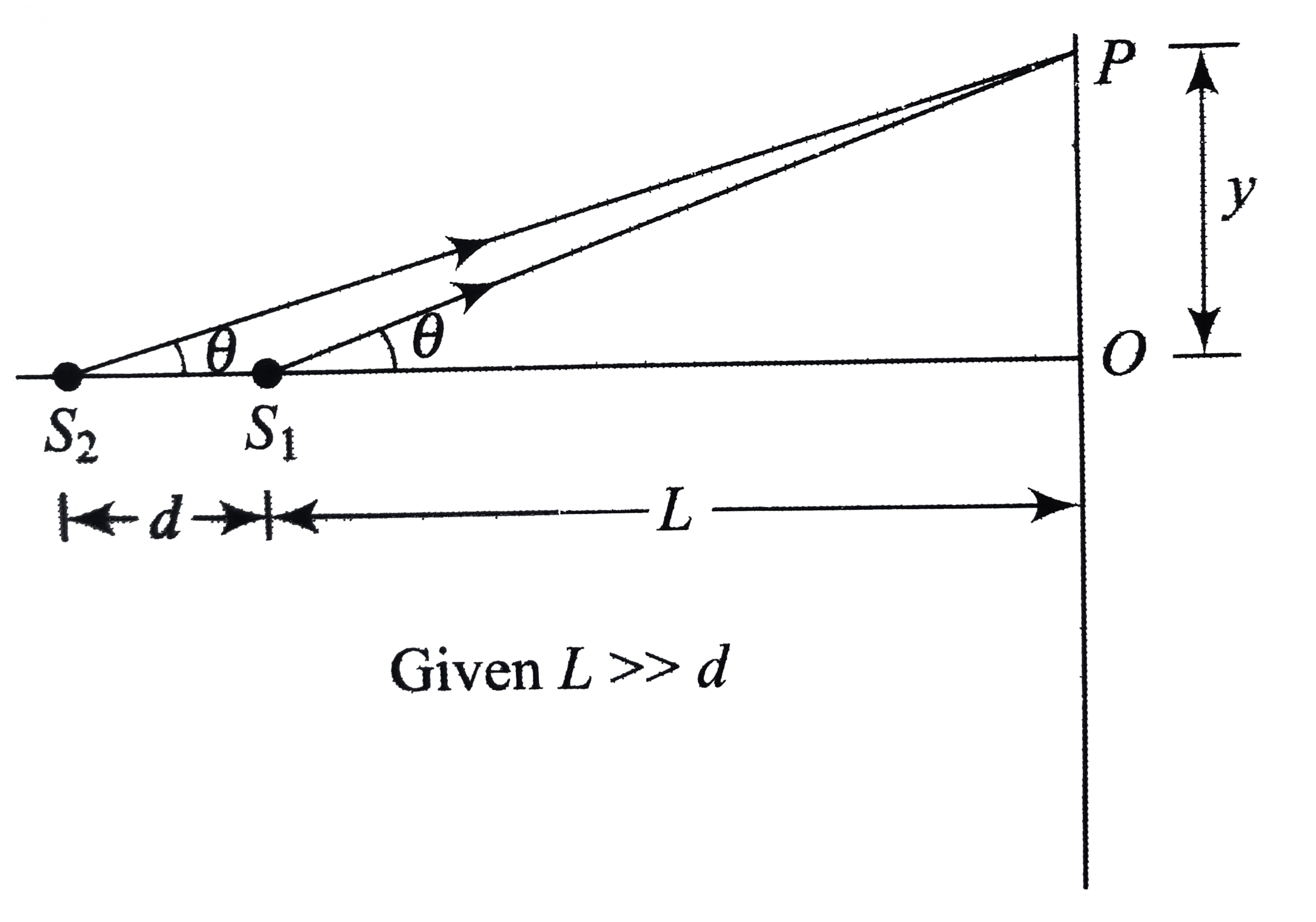
As shown in the figure, path difference between the waves is same in the circular path on the wall. Hence, locus of the points of same intensity is a circle.
Maximum path difference will be at O=3λ.
Minimum path difference will be at a large distance from O and it will be zero.
(BMS_V04_C02_S01_008_S01.png" width="80%">
Topper's Solved these Questions
- BOOK - CENGAGE PHYSICSCHAPTER - WAVE OPTICSEXERCISE - Solved Examples10videos
WAVE OPTICS
- BOOK - CENGAGE PHYSICSCHAPTER - WAVE OPTICSEXERCISE - Exercise 2.112videos
WAVE OPTICS
- BOOK - CENGAGE PHYSICSCHAPTER - THERMODYNAMICSEXERCISE - QUESTION BANK34videos
THERMODYNAMICS
- BOOK - CENGAGE PHYSICSCHAPTER - WAVESEXERCISE - QUESTION BANK38videos
WAVES
Similar Questions
The two coherent sources of monochromatic light of wavelength λ are located at a separation λ. The two sources are placed on a horizontal line and screen is placed perpendicular to the line joining the sources. Find position of the farthest minima from the centre of the sources.
View SolutionA monochromatic point source(S1) is at a distance d from a screen. Another identical source (S2) is at a large distance from the screen. The two sources are on a line which is perpendicular to the screen. Sources are coherent. What is the shape of interference fringes on the screen?
(b) Three identical coherent sources are placed on a straight line with two neighbouring ones separated by a distance d = 0.06 mm. The sources produce monochromatic light of wavelength λ = 550.4 nm. A line AB is located at a distance D = 2.50 m from the sources and is perpendicular to line joining the three sources. Intensity of light at P with any one of the sources switched on is Io. Find the intensity when all three sources are switched on. Distance of point P from O isy = 1.72 cm (see figure)
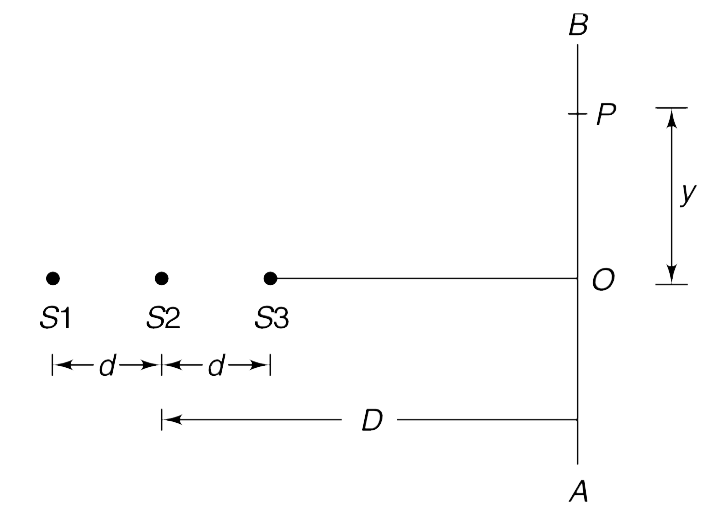 View Solution
View Solution
Knowledge Check
- Question 1 - Select One
Two coherent point sources S1 and S2 vibrating in phase emit light of wavelength λ. The separation between the sources is 2λ. Consider a line passing through S2 and perpendicular to line S1S2. Find the position of farthest and nearest minima.
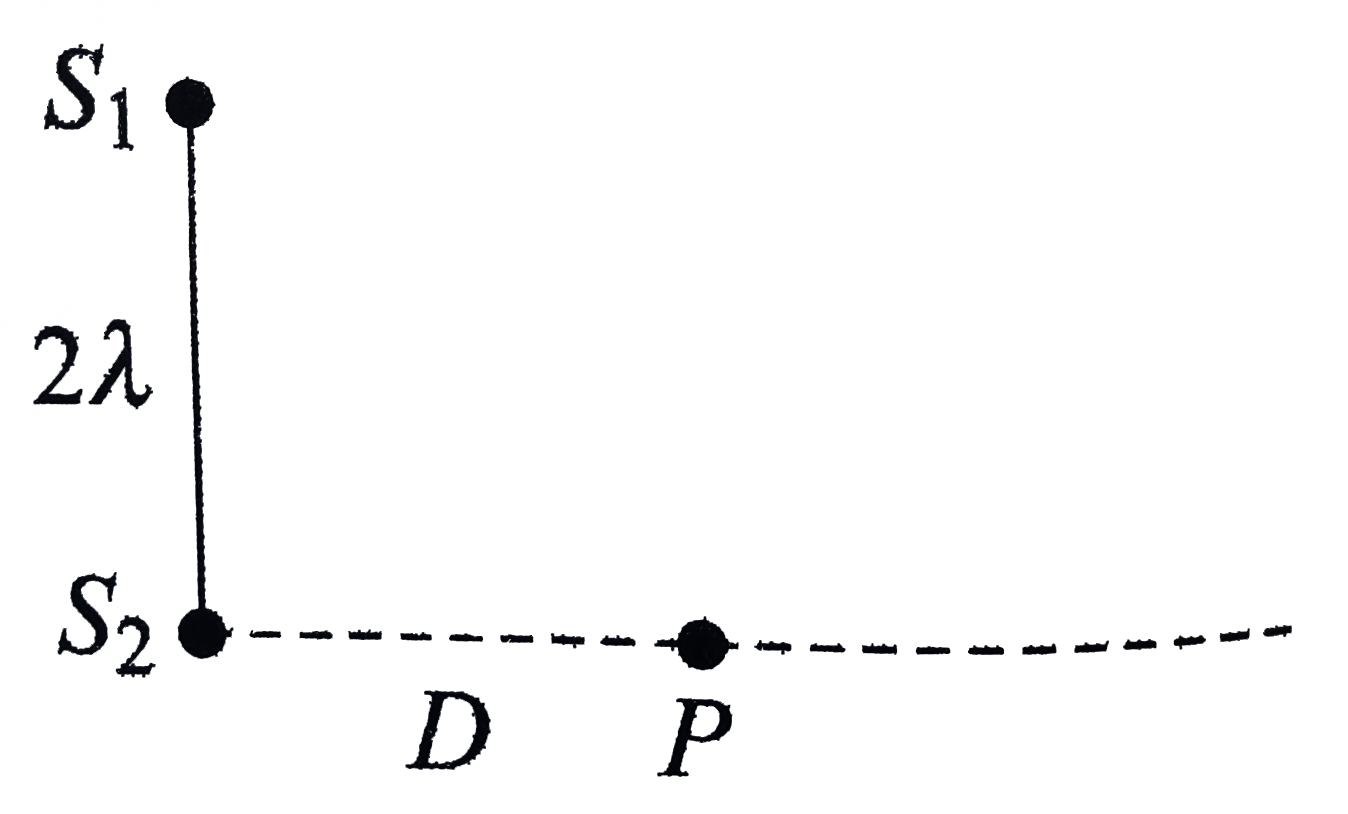 .A7λ12B15λ4Cλ2D3λ4
.A7λ12B15λ4Cλ2D3λ4
Two point sources ofsound are placed at a distance d and a detector moves on a straight line parallel to the line joining the sources as shown in figure-6.27 at a distance D away from sources. Initially Detector is situated on the line so that it is equidistant from both the sources. Find the displacement of detector when it detects nth maximum sound and also find its displacement when it detects nth minimum sound.
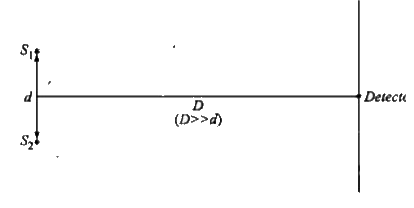 View Solution
View SolutionA line source emits a cylindrical expanding wave. Assuming the medium absorbs no energy find how the ampitude and intensity of wave depend on the distance from the source?
View SolutionA point source of light is placed at a distance of 2f from a converging lens of focal length f. The intensity on the other side of the lens is maximum at a distance
View SolutionTwo point sources are d=nλ apart. A screen is held at right angles to the line joining the two sources at a distance D from the nearer source. Calculate the distance of the point on the screen where the first bright fringe is observed. Assume D>>d.
View SolutionTwo point sources of sound are placed at a distance d and a detector moves on a straight line parallel to the line joining the sources as shown in figure. At a distance D away from sources. Initially Detector is situated on the line so that it is equidistant from both the sources. Find the displacement of detector when it detects nth maximum sound and also find its displacement when it detects nth minimum sound.
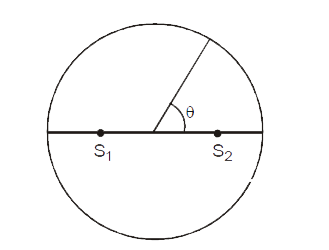 View Solution
View SolutionFind the intensity at a point on a screen in YDSE, where the interfering waves of equal intensity have a path difference of (i) λ/4 (ii) λ/3.
View SolutionTwo point sources oscillating in the same phase are on a straight line perpendicular to a screen. The nearest source is at a distance of D » λ from the screen. What shape will the interference fringes have on the screen? What is the distance on the screen from the perpendicular to the nearest bright fringe if the distance between the sources is l=nλ (n is an integer)? Note that λ « l.
View Solution

